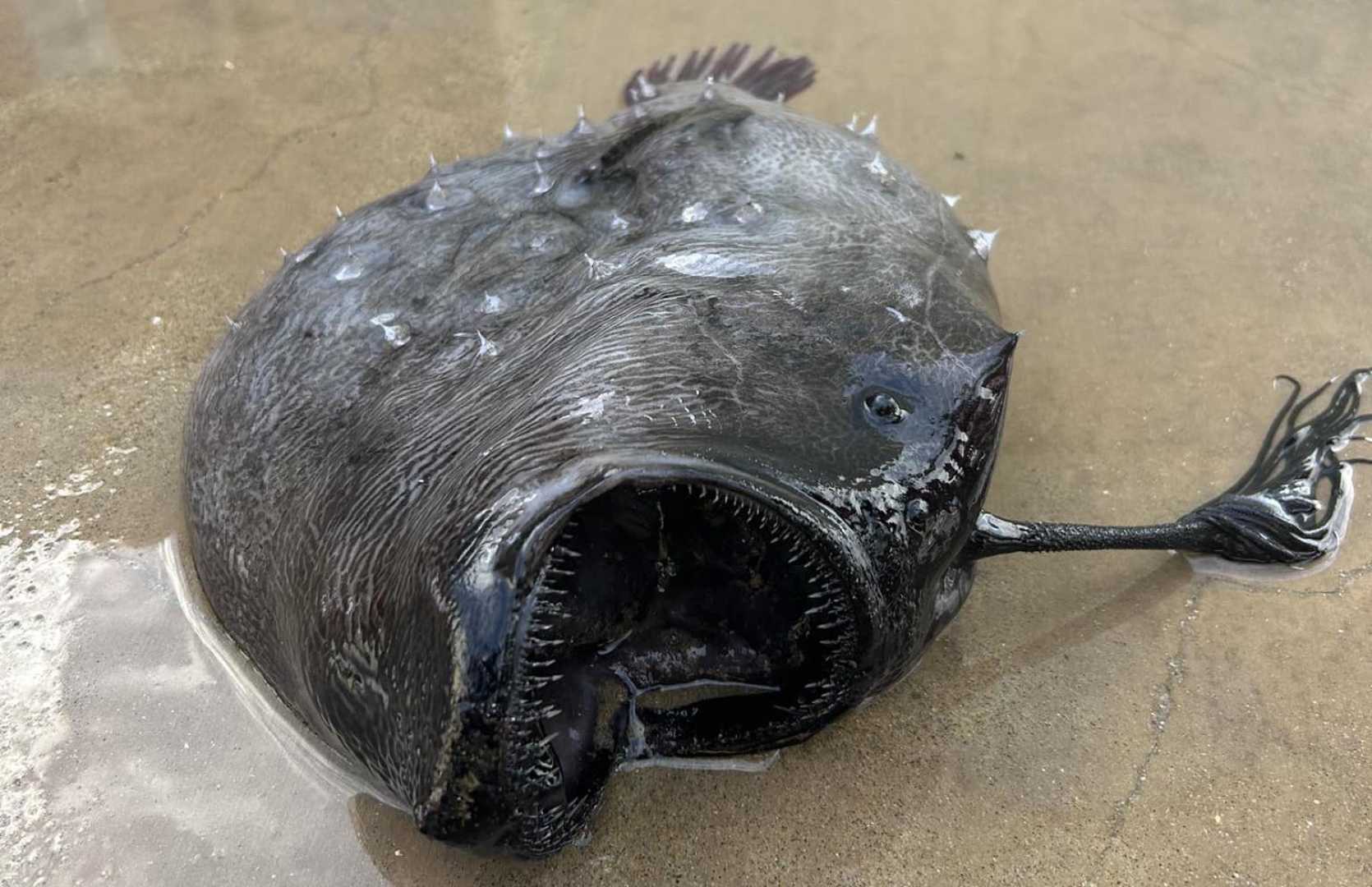News
Rare Deep-Sea Anglerfish Spotted Near Canary Islands

TENERIFE, Canary Islands — A deep-sea anglerfish, known for its menacing teeth and bioluminescent lure, was spotted unexpectedly in shallow waters off the coast of Tenerife earlier this month. This sighting marks a rare occurrence for marine biologists and enthusiasts alike.
The anglerfish, identified by its scientific name Melanocetus johnsonii, was captured in striking videos and photographs posted by local marine conservation organization Condrik Tenerife and marine photographer David Jara Boguna. Typically found between 650 and 6,500 feet beneath the ocean’s surface, deep-sea anglerfish dwell in the Bathypelagic Zone, a region where light from the sun fails to penetrate.
In this midnight zone, water temperatures hover around 39 degrees Fahrenheit, and the pressure can exceed 5,850 pounds per square inch. The research team noted that very few sightings of deep-sea anglerfish have been recorded in open waters, leading to questions about the reasons for this individual’s unusual presence in shallower depths.
“To date, records have mostly consisted of larvae, dead adults, or specimens spotted by submarines during deep-sea scientific expeditions,” Condrik Tenerife stated in a social media post, underscoring the significance of this sighting. It has sparked widespread excitement across social media platforms, where videos of the fish have gone viral.
Notably, only female anglerfish possess the characteristic luminescent lure used for attracting prey, aiding their survival in the pitch-black depths of the ocean. According to the Smithsonian Museum of Natural History, this bioluminescent adaptation is crucial for hunting in an environment where visibility is virtually nonexistent.
The research team’s joy at the find was palpable. In their announcement, they declared, “This sighting will be remembered forever,” reflecting the rarity and importance of the event for marine science.












